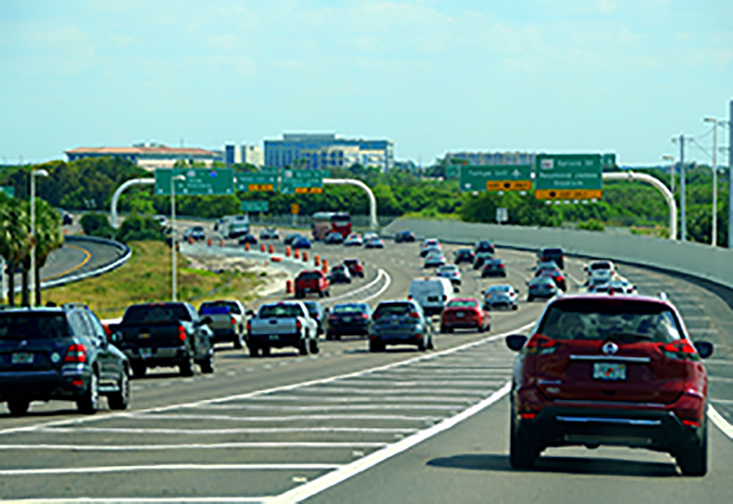Dramatic decreases in traffic caused by COVID-19 shutdowns improved air quality in car-dependent states but didn’t offset additional forms of pollution in other parts of the country.
Those findings by a University of South Florida researcher suggest that while decreasing the number of vehicles on the road is a good first step toward creating cleaner air, additional measures aimed at reducing other sources of air pollution, such as coal plants or industrial factories, must also be considered.
The study, led by Yasin Elshorbany, an assistant professor of atmospheric chemistry and climate change at USF’s St. Petersburg campus, was published in the Journal of Remote Sensing.
For the study, Elshorbany analyzed the impact of the pandemic-related lockdown on air quality by using remote sensors that measured different elements within the air, including nitrogen dioxide, carbon monoxide, ozone and aerosol particles. The study focused on states with high traffic volume, such as New York, Illinois, Florida, Texas and California.
The clear skies and empty roads caused by the COVID-19 lockdowns created a valuable research opportunity. The study found that vehicle volumes across the U.S. dropped by 40-60 percent shortly after the pandemic was declared.
The results showed a significant improvement in air quality in regions where traffic is the main pollution source, such as in New York City and the state of Florida. However, it was not as effective in areas dominated by other sources of pollution, including industrial emissions or meteorological conditions. In fact, in areas such as Charleston, WV, and Chicago, air quality actually worsened during the pandemic due to an increase in other pollution sources.
“This shows that in certain states, in addition to traffic regulations we need to focus on other big pollution problems, such as industrial emissions in Illinois, wildfires in California or oil refineries in Texas,” Elshorbany added.
Elshorbany was interested in how significant the changes in air quality would be during the lockdown because enhanced environmental regulations related to tailpipe pollution were already leading to cleaner air in the U.S.
“With the advancements in technology and the use of catalysts in cars over the past few decades, air quality has improved in the U.S.,” he said. “This has resulted in traffic not serving as the main pollutant in most of the country.”
The study was funded by a $25,000 grant from USF Research & Innovation, one of 14 studies supported by nearly $320,000 in seed grants for COVID-19 research partnerships.
In addition to the current study, Elshorbany is working with a multidisciplinary team from USF to examine key environmental impacts brought about by the lockdown. Their goal is to better understand the health and socioeconomic consequences of changes in air quality.
“This demonstrates USF’s commitment to timely and important research,” Elshorbany said. “It gives us the opportunity to publish information that is relevant to policymakers and useful to everyday people.”
